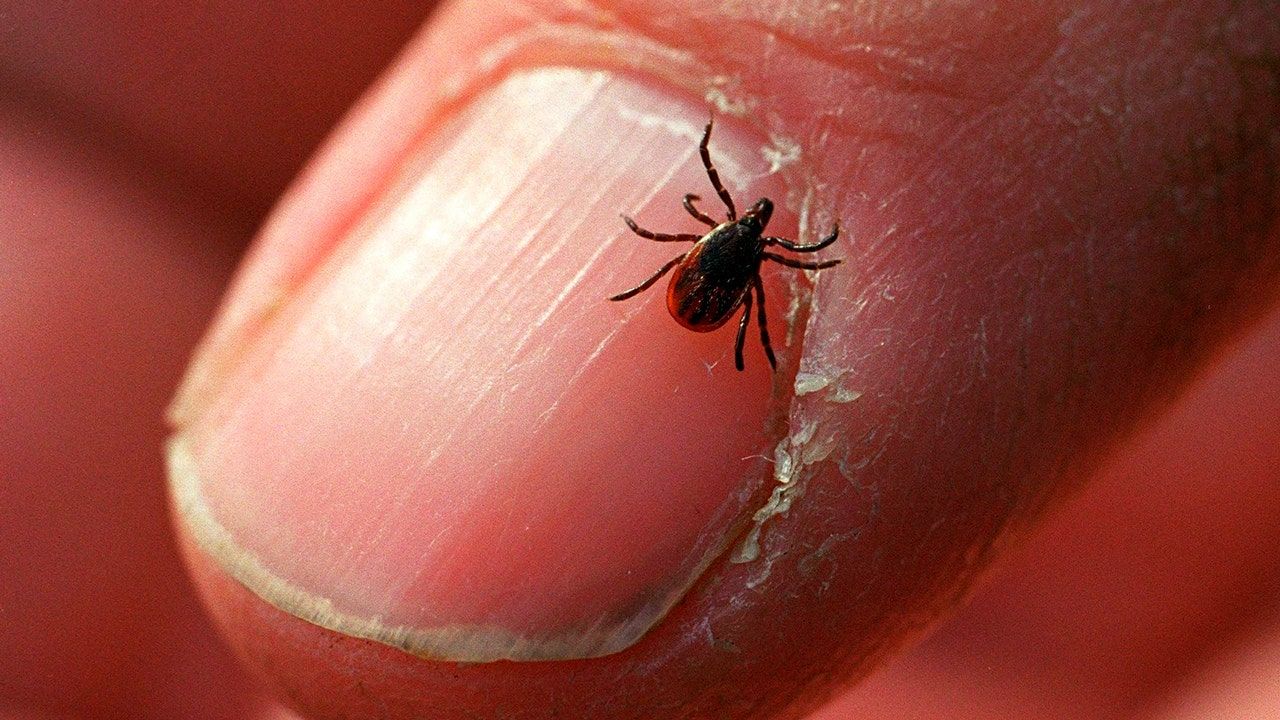Tick season is beginning across the United States, and experts warn that leeches may be more abundant than ever.
Another mild winter and other favorable factors likely mean the 2024 tick population will be the same as last year's or higher, some researchers say.
“It's very bad and it's been getting worse,” said Susanna Visser of the Centers for Disease Control and Prevention.
TICK BITES AND LYME DISEASE: WHAT TO DO IF A TICK BITES YOU OR YOUR PET
An increasing variety of ticks are advancing into new geographic areas, causing unusual diseases. In New York and other northern states, for example, southern exotic species such as the Gulf Coast tick and the lone star tick are being detected.
But the tick that experts warn about most is the common blacklegged tick, which is found primarily in forests and transmits Lyme disease. Infection rates begin to peak in May, and U.S. health officials estimate that nearly half a million Lyme disease infections occur annually.
Here's a look at what to expect this year and how you can protect yourself.
An adult deer tick, also known as a blacklegged tick, crawls on a nail at Connetquot State Park in Oakdale, New York, on December 27, 2011. (Bill Davis/Newsday RM via Getty Images)
BRAND FACTS
Ticks are small, eight-legged blood-sucking parasites (arachnids, not insects) that feed on animals and sometimes people. Some ticks are infected with germs that can cause illness and transmit them when they bite.
There is no widely accepted estimate of how many ticks there are from year to year, but there is scientific consensus that they are an increasingly common health hazard in large areas of the United States.
Blacklegged ticks, also known as deer ticks because they feed on deer, are among the most common ticks in the eastern half of the U.S. They were abundant centuries ago, then declined when forests were cleared and hunted. deer, and recovered along with the deer. and wooded suburbs. Ticks have spread from parts of New England and the Midwest over a wider range.
Tick populations change throughout the year and their numbers depend on a few factors. They like warm, humid weather, and can be seen more after a mild winter. The more deer and mice available to feed on also matters.
Overall, the blacklegged tick population has been expanding for at least four decades, researchers say.
“This is a slow-motion epidemic,” said Rebecca Eisen, a CDC research biologist and tick expert.
2024 SEASON FORECAST
Weather can influence the severity of tick season.
Very cold, dry winters can reduce tick populations, but recent winters have been mild, a trend some attribute to climate change.
As Scott Williams, a tick researcher at the Connecticut Agricultural Experiment Station, said, “Winters no longer limit the tick population.”
Ticks can handle the heat, but tend to almost hibernate when it is a dry summer. That happened in Maine between 2020 and 2022, said Chuck Lubelczyk, a vector ecologist at the Maine Health Research Institute.
But last year was a very wet year and tick activity spiked in Maine, the state with the highest incidence of Lyme disease in the country. Weather service predictions call for higher temperatures and precipitation, so “at least on paper, it could be a very good year for ticks,” Lubelczyk said.
In Wisconsin, adult ticks were outside longer than usual due to a mild winter. Tick nymphs are beginning to emerge and a wet spring is setting the stage for the possibility of a robust population, said Xia Lee, an entomologist with the Wisconsin Department of Health Services.
The same goes for New York.
“It will be as bad as last year, or worse,” said Saravanan Thangamani, who studies ticks and tick-borne diseases at SUNY Upstate Medical University in Syracuse.
WHAT IS LYME DISEASE?
Not all ticks are infected with disease-causing germs: About 20% to 30% of blacklegged tick nymphs that emerge in the Northeast and Midwest this spring and early summer will carry the bacteria that causes tick disease. Lyme, experts estimate.
Symptoms of Lyme disease tend to begin between three and 30 days after the bite occurs and can include fever, headache, fatigue, and a bull's-eye rash. If you are bitten and develop symptoms, see a doctor for antibiotic treatment.
HOW TO KEEP TICKS OFF YOU
Experts say the best thing to do is take steps to avoid a tick bite in the first place.
If you go outdoors, take note of wooded areas and places where grass properties begin to permeate wooded areas. Ticks tend to perch on ankle-high vegetation with the tops of their legs extended, waiting to latch onto an unsuspecting dog or human.
Try to walk in the middle of trails, wear light-colored, permethrin-treated clothing, and use Environmental Protection Agency (EPA)-registered insect repellents.
CLICK HERE TO GET THE FOX NEWS APP
HOW TO CHECK FOR TICKS
When you come in, check for ticks. They can be found anywhere on the human body, but the most common places include around the waist, behind the knees, between the fingers and toes, in the armpits, at the navel, and around the neck or hair line.
They are harder to see when they are young, so look closely and remove them immediately with tweezers.
CDC does not recommend sending individual ticks to testing services for testing, because a person may receive more than one tick bite and the results from the tested tick may not be enough information.












